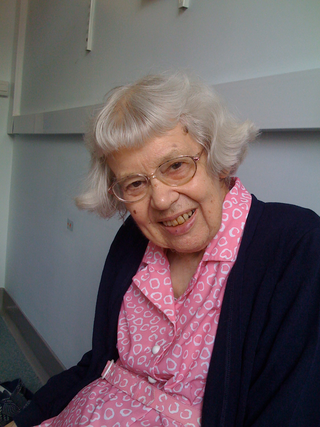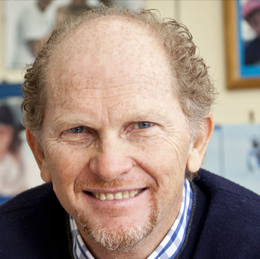Related Research Articles

The Y chromosome is one of two sex chromosomes in therian mammals and other organisms. Along with the X chromosome, it is part of the XY sex-determination system, in which the Y is the sex-determining chromosome because the presence of the Y chromosome causes offspring produced in sexual reproduction to be of male sex. In mammals, the Y chromosome contains the SRY gene, which triggers development of male gonads. The Y chromosome is passed only from male parents to male offspring.

The Marine Biological Laboratory (MBL) is an international center for research and education in biological and environmental science. Founded in Woods Hole, Massachusetts, in 1888, the MBL is a private, nonprofit institution that was independent for most of its history, but became officially affiliated with the University of Chicago on July 1, 2013. It also collaborates with numerous other institutions.

Cold Spring Harbor Laboratory (CSHL) is a private, non-profit institution with research programs focusing on cancer, neuroscience, plant biology, genomics, and quantitative biology. It is located in Laurel Hollow on Long Island, New York.
Repeated sequences are short or long patterns that occur in multiple copies throughout the genome. In many organisms, a significant fraction of the genomic DNA is repetitive, with over two-thirds of the sequence consisting of repetitive elements in humans. Some of these repeated sequences are necessary for maintaining important genome structures such as telomeres or centromeres.
David C. Page is an American biologist and professor at the Massachusetts Institute of Technology (MIT), the director of the Whitehead Institute, and a Howard Hughes Medical Institute (HHMI) investigator. He is best known for his work on mapping the Y-chromosome and on its evolution in mammals and expression during development.

X-inactivation is a process by which one of the copies of the X chromosome is inactivated in therian female mammals. The inactive X chromosome is silenced by being packaged into a transcriptionally inactive structure called heterochromatin. As nearly all female mammals have two X chromosomes, X-inactivation prevents them from having twice as many X chromosome gene products as males, who only possess a single copy of the X chromosome.

Mary Frances Lyon was an English geneticist best known for her discovery of X-chromosome inactivation, an important biological phenomenon.
Human genetics is the study of inheritance as it occurs in human beings. Human genetics encompasses a variety of overlapping fields including: classical genetics, cytogenetics, molecular genetics, biochemical genetics, genomics, population genetics, developmental genetics, clinical genetics, and genetic counseling.

The Human Genome Project (HGP) was an international scientific research project with the goal of determining the base pairs that make up human DNA, and of identifying, mapping and sequencing all of the genes of the human genome from both a physical and a functional standpoint. It started in 1990 and was completed in 2003. It remains the world's largest collaborative biological project. Planning for the project began in 1984 by the US government, and it officially launched in 1990. It was declared complete on April 14, 2003, and included about 92% of the genome. Level "complete genome" was achieved in May 2021, with only 0.3% of the bases covered by potential issues. The final gapless assembly was finished in January 2022.
A dicentric chromosome is an abnormal chromosome with two centromeres. It is formed through the fusion of two chromosome segments, each with a centromere, resulting in the loss of acentric fragments and the formation of dicentric fragments. The formation of dicentric chromosomes has been attributed to genetic processes, such as Robertsonian translocation and paracentric inversion. Dicentric chromosomes have important roles in the mitotic stability of chromosomes and the formation of pseudodicentric chromosomes. Their existence has been linked to certain natural phenomena such as irradiation and have been documented to underlie certain clinical syndromes, notably Kabuki syndrome. The formation of dicentric chromosomes and their implications on centromere function are studied in certain clinical cytogenetics laboratories.

Jack William Szostak is a Canadian American biologist of Polish British descent, Nobel Prize laureate, University Professor at the University of Chicago, former Professor of Genetics at Harvard Medical School, and Alexander Rich Distinguished Investigator at Massachusetts General Hospital, Boston. Szostak has made significant contributions to the field of genetics. His achievement helped scientists to map the location of genes in mammals and to develop techniques for manipulating genes. His research findings in this area are also instrumental to the Human Genome Project. He was awarded the 2009 Nobel Prize for Physiology or Medicine, along with Elizabeth Blackburn and Carol W. Greider, for the discovery of how chromosomes are protected by telomeres.

Xist is a non-coding RNA transcribed from the X chromosome of the placental mammals that acts as a major effector of the X-inactivation process. It is a component of the Xic – X-chromosome inactivation centre – along with two other RNA genes and two protein genes.

Richard M. Myers is an American geneticist and biochemist known for his work on the Human Genome Project (HGP). The National Human Genome Research Institute says the HGP “[gave] the world a resource of detailed information about the structure, organization and function of the complete set of human genes.” Myers' genome center, in collaboration with the Joint Genome Institute, contributed more than 10 percent of the data in the project.
Edith Heard is a British-French researcher in epigenetics who has been serving as the Director General of the European Molecular Biology Laboratory (EMBL) since January 2019. She is also Professor at the Collège de France, holding the Chair of Epigenetics and Cellular Memory. In 2025 she will become CEO of the Francis Crick Institute in London, U.K.

Andrea Ballabio is an Italian scientist and academic professor. He is founder-director of the Telethon Institute of Genetics and Medicine (TIGEM), Naples, Italy; professor of medical genetics at the University of Naples Federico II, Naples, Italy and visiting professor of genetics at Baylor College of Medicine in Houston, Texas, U.S. and at the University of Oxford, UK. He is also the former director of the Telethon Institute of Genetics and Medicine in Milan, Italy. He is the recipient of 2016 Louis-Jeantet Prize for Medicine for his contribution to understanding the molecular mechanisms controlling the function of lysosomes in health and disease.
Michael Paul Snyder is an American genomicist, a Stanford School of Medicine professor, and chair of genetics and director of genomics and personalized medicine at Stanford University.
James Francis Gusella is a Canadian molecular biologist and geneticist known for his work on Huntington's disease and other neurodegenerative diseases in humans. He is the Bullard Professor of Neurogenetics in the Department of Genetics at Harvard Medical School and an investigator at the Center for Genomic Medicine at the Mass General Research Institute.
Carolyn J. Brown is a Canadian geneticist and Professor in the Department of Medical Genetics at the University of British Columbia. Brown is known for her studies on X-chromosome inactivation, having discovered the human XIST gene in 1990.
Barbara Ruben Migeon was an American geneticist who was a professor at the Johns Hopkins University Institute of Genetic Medicine. She founded the Johns Hopkins program in Human Genetics and Molecular Biology. Migeon is the author of Females are Mosaics: X inactivation and sex differences in disease. She was awarded the American College of Medical Genetics and Genomics Dimes/Colonel Harland D. Sanders Lifetime Achievement Award in 2016.

Grant Robert Sutherland is a retired Australian human geneticist and celebrated cytogeneticist. He was the Director, Department of Cytogenetics and Molecular Genetics, Adelaide Women's and Children's Hospital for 27 years (1975-2002), then became the Foundation Research Fellow there until 2007. He is an Emeritus Professor in the Departments of Paediatrics and Genetics at the University of Adelaide.
References
- ↑ Enterprise Newspapers Staff (15 December 2014). "New President And Director At MBL". CapeNews.net. Retrieved 5 March 2016.
- ↑ "Huntington F. Willard". Archived from the original on 2015-04-03. Retrieved 2015-04-02.
- ↑ "Huntington F. Willard to Step Down as Marine Biological Laboratory President". www.mbl.edu. Archived from the original on 10 September 2018. Retrieved 16 June 2017.
- ↑ "MBL Director Huntington Willard elected to National Academy of Medicine". uchicago.edu. 17 October 2016. Retrieved 16 June 2017.
- ↑ "GCB Faculty". duke.edu. Retrieved 5 March 2016.
- ↑ "Huntington F. Willard, PhD at DukeHealth.org". dukehealth.org. Archived from the original on 7 December 2006. Retrieved 16 June 2017.
- ↑ Brown, Carolyn J.; Ballabio, Andrea; Rupert, James L.; Lafreniere, Ronald G.; Grompe, Markus; Tonlorenzi, Rossana; Willard, Huntington F. (1991). "A gene from the region of the human X inactivation centre is expressed exclusively from the inactive X chromosome". Nature. 349 (6304): 38–44. Bibcode:1991Natur.349...38B. doi:10.1038/349038a0. PMID 1985261. S2CID 4332325.